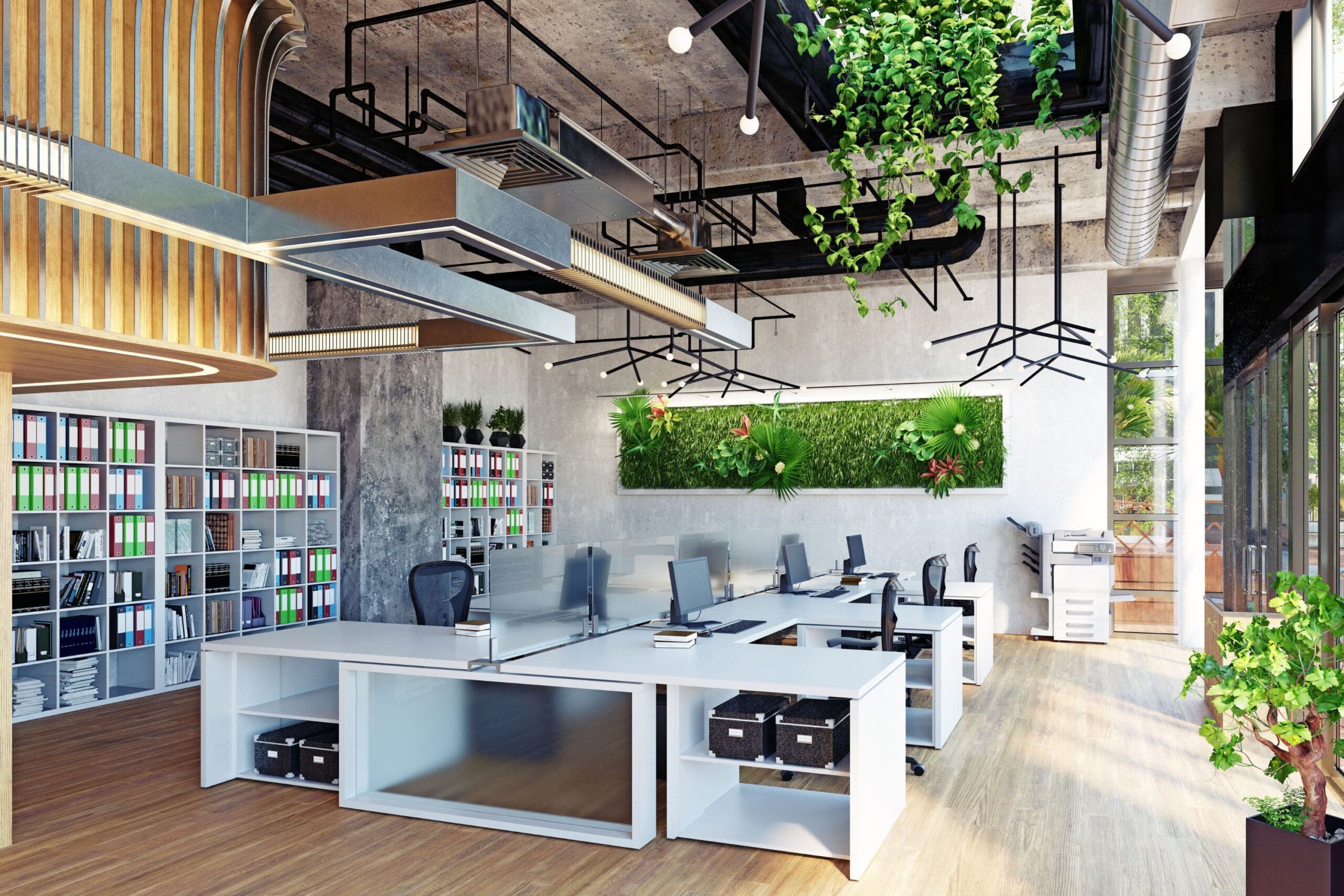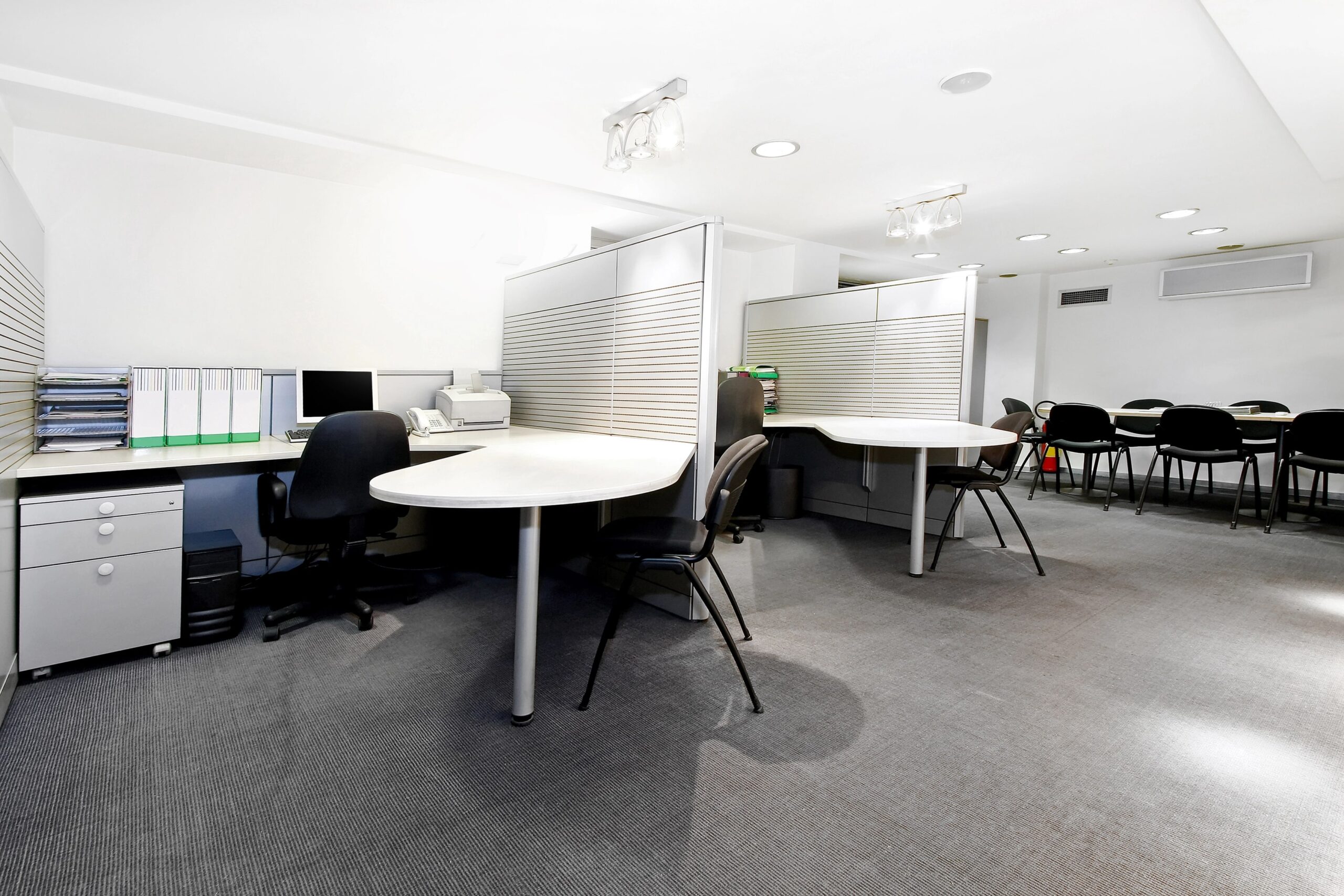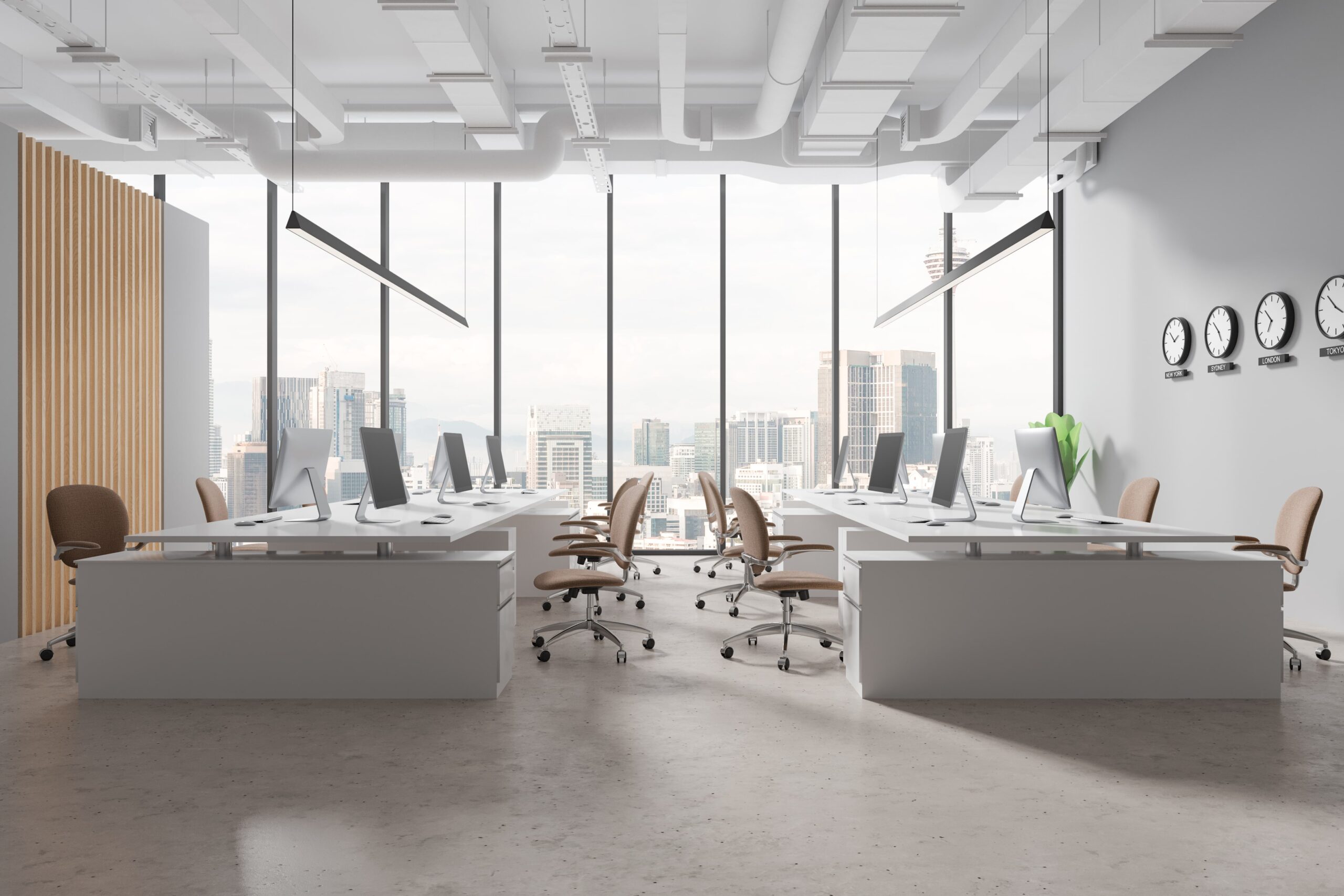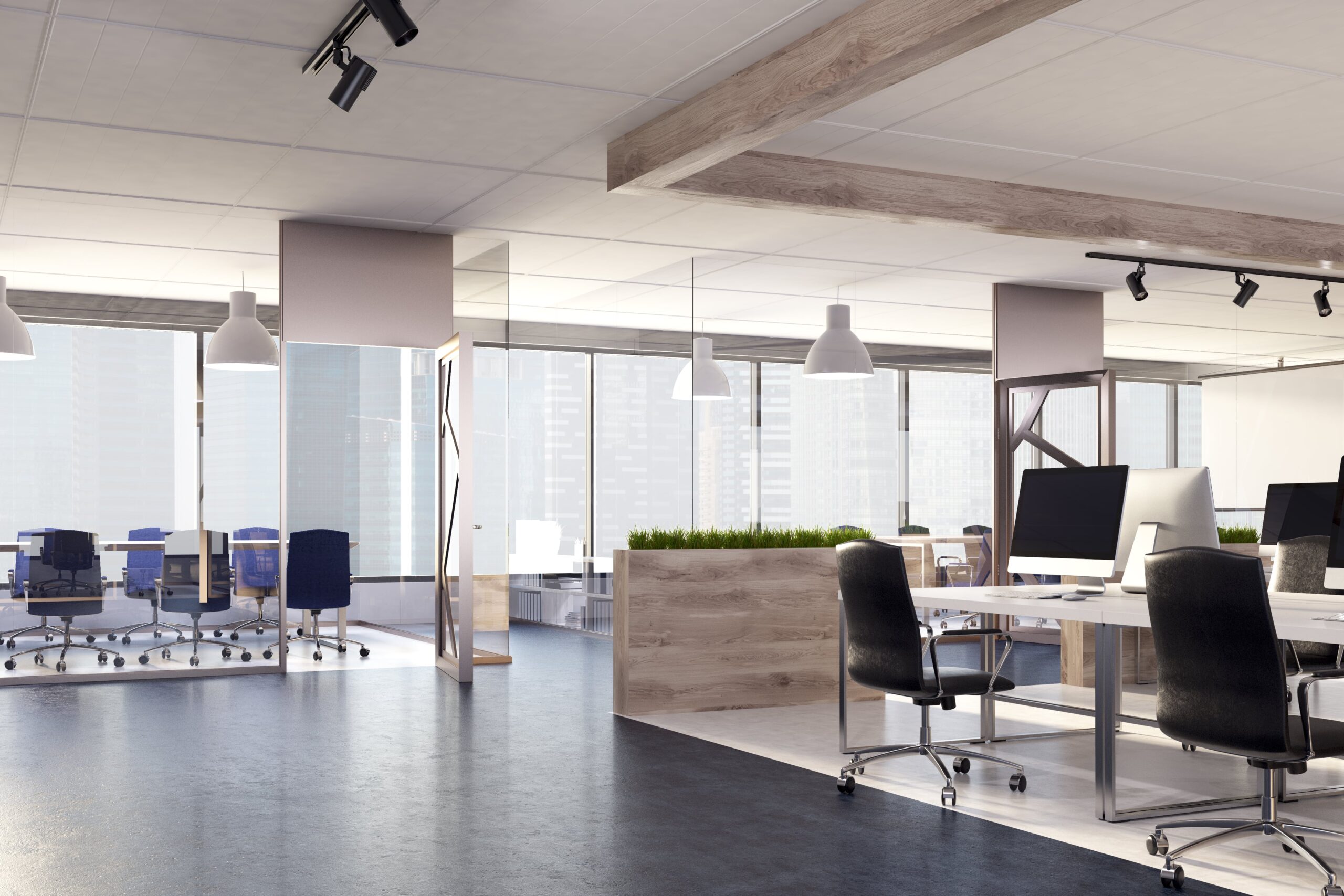In the dynamic landscape of modern workplaces, the debate between office cubicles and open plan offices continues to shape discussions on office design and productivity. Each arrangement presents a distinct set of advantages and challenges, catering to diverse work cultures and organisational needs. Let’s delve deeper into the intricacies of these two office layouts to better understand their impact on employee well-being and productivity.
Office Cubicles
Private cubicles have been a hallmark of office environments for decades, offering employees a designated space for focused work and concentration. Here’s a closer look at the pros and cons:
Pros
Create privacy and concentration
The defining feature of cubicles is the privacy they provide. Employees can immerse themselves in tasks without constant interruptions, fostering a conducive environment for concentration and deep work.
Personalisation
Cubicles provide individuals with a semi-private space that they can personalise to reflect their personality and work style. From adjustable desks and seating, to family photos and desk plants, personal touches can contribute to a sense of ownership and comfort in the workspace.
Reduced visual distractions
The wall partitions help reduce visual distractions, enabling employees to maintain their focus on tasks and deadlines without the constant movement and visual stimuli present in open plan offices.
Cons
Isolation and lack of collaboration
While cubicles offer privacy, they can inadvertently isolate employees and hinder spontaneous collaboration and communication among team members. The cubicle panels may create silos within the organisation, limiting cross-departmental interactions and idea sharing.
Limited natural light
Depending on the layout and placement, cubicle panels may obstruct natural light from reaching all areas of the office, potentially impacting the mood and energy levels of employees. Access to natural light is crucial for promoting well-being and productivity in the workplace.
Perception of hierarchy
In some organisational cultures, the allocation of larger cubicles or corner offices to higher-ranking employees may perpetuate hierarchical structures and contribute to feelings of inequality among staff members.
Open Plan Offices
Open plan offices have gained popularity in recent years for their emphasis on collaboration, flexibility, and spatial efficiency. Here’s a closer look at the pros and cons:
Pros
Enhanced collaboration
Open plan layouts promote spontaneous interactions and idea sharing among team members, fostering a sense of camaraderie and collective ownership over projects. The open environment helps to encourage teamwork and collaboration, leading to innovative solutions and improved productivity.
Flexibility and adaptability
Open plan offices offer greater flexibility in workspace design and utilisation. With modular office furniture and adaptable layouts, organisations can easily reconfigure the space to accommodate changing team dynamics, project requirements, and growth opportunities.
Natural light and airflow
An open office plan often features expansive windows and unobstructed sightlines, allowing natural light to permeate the workspace and create a bright, airy atmosphere. Access to daylight and fresh air can enhance employee well-being, mood, and cognitive performance.
Cons
Noise and distractions
The absence of physical barriers in open plan offices can lead to increased noise levels and distractions, making it challenging for employees to concentrate on complex tasks or engage in confidential conversations. Ambient noise from nearby workstations or collaborative areas may disrupt focus and productivity.
Lack of privacy
The open layout of open plan offices exposes employees to constant visual and auditory stimuli, compromising their sense of privacy and personal space. Employees may feel reluctant to engage in sensitive discussions or creative brainstorming sessions in a shared, open environment.
Health and well-being concerns
Prolonged exposure to the bustling atmosphere of open plan offices can contribute to heightened stress levels, fatigue, and burnout among employees. The lack of privacy and boundaries may exacerbate feelings of anxiety and overwhelm, impacting overall job satisfaction and retention rates.
Create Endless Configurations with a Hybrid Approach
As the landscape of office design evolves, there is a growing acknowledgment that a one-size-fits-all approach may not suit the diverse needs of modern workplaces. Striking a balance between office cubicles and open plan layouts often involves adopting a hybrid approach that allows for endless configurations, fostering adaptability and maximising space utilisation. Here’s a few tips on how organisations can create versatile work environments that cater to a variety of tasks and preferences.
- Modular furniture for flexibility – Modular setups allow easy adjustments for different team structures and projects, fostering a dynamic workspace that adapts to evolving needs.
- Activity-based zones – Designated areas cater to various tasks, from focused work to collaboration, ensuring employees have diverse work settings.
- Flexible layouts with hot-desking – Hot-desking enables employees to choose their workspace daily, optimising office space and accommodating changing needs.
- Tech integration for seamless work – Wireless connectivity and smart furniture facilitate smooth transitions between work settings, enhancing collaboration and productivity.
- Slimline screen systems – Incorporating slimline screen systems can revolutionise the way private cubicles are created. These systems, characterised by their sleek design and versatility, offer a contemporary solution for dividing workspaces while maintaining an open and collaborative environment.
Additional Features of Slimline Screens
One notable feature of slimline screen systems is their ability to create private cubicles without sacrificing natural light or obstructing airflow. The slimline design ensures that screens are unobtrusive yet effective in delineating individual work areas. By utilising completely screen-hung tops, these systems maximise screen height while minimising the visual impact on the overall office layout.
The flexibility of slimline screen systems allows for customisation according to specific office requirements. From adjustable screen heights to modular configurations, organisations can tailor the layout to suit the needs of their employees and the nature of their work. For instance, teams requiring more privacy may opt for higher screens, while departments focused on collaboration may prefer lower partitions to encourage interaction.
Get in Touch Today
No matter the type of configuration you choose for your workplace, the type of office furniture you choose can make a huge difference to the overall look and feel of the office, as well as the comfort of your employees. At Arteil, we provide a range of office chairs, expert fabric upholstery, and stylish office furniture. Explore our online collection, contact us or visit our Perth showroom today.
FAQs
What is an open plan office?
An open plan office is a layout characterised by large, open spaces without physical barriers such as walls or cubicles between workstations. It promotes collaboration and transparency among employees by fostering a shared workspace environment.
What are office cubicles?
Office cubicles are partitioned workspaces that provide employees with a degree of privacy and separation from their colleagues. They typically feature walls or partitions that define individual work areas within a larger office space.
How can organisations balance the advantages of both open plan offices and office cubicles?
Organisations can achieve a balance between open plan offices and office cubicles by adopting hybrid approaches that incorporate elements of both layouts. This may include creating flexible workspaces, providing quiet zones for focused work, and soliciting employee feedback to inform office design decisions.
Are office cubicles outdated?
While open plan offices have gained popularity in recent years, office cubicles are not necessarily outdated. They continue to offer benefits such as privacy, concentration, and personalisation, making them a viable option for certain work environments and preferences.




